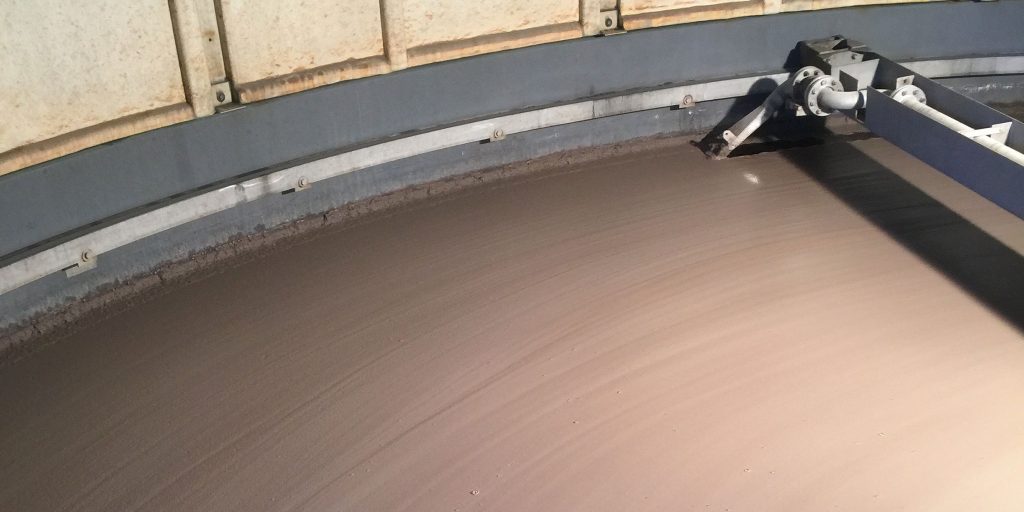The Task
The Microflotation units with patented AQUATECTOR® Microfloat® technology were put into operation in the year 1997 at Bayer AG, Uerdingen.They serve the purpose of tertiary and reduction of TSS, COD and turbidity. Here, microflotation replaces sand filtration.
The Solution
The flotation absorbs the waste-water that has already been completely biologically purified immediately after the final clarification. In the microflotation, the waste-water is saturated with compressed air at about 3.5 bar. The small bubbles which occur during the following pressure reduction, mix up with the fine suspended and sludge parts and get to the surface of the liquid. There, a sludge removal system sucks up the floated sludge parts. In the design with two parallel operated round cells of a diameter of 10 m respectively, a non-contacting flotate removal and the pressure re-saturation system AQUATECTOR®, the microflotation technology installed here is a novelty in the purification technology.
The enviplan® microflotation serves as supplementary processing stage for the wide-ranging separation of TSS of the completely biologically purified waste-water of Bayer AG. Beside the further reduction of the cumulative parameter COD, the duty of the flotation is to secure the monitoring values for unfavourable conditions of the purification plant at the outlet. For the wide-spread application of the sand-filtration as processing stage in the purification technology, the flotation represents a high-performance, highly variable and cost-effective processing alternative. The energy requirement of the entire plant lies at < 7,5 Wh per m³ of treated waste-water. About nine million cubic meter of water can be subsequently processed with the new system yearly. Dr. Kuhn as assistant head of factory, responsible for environmental protection: “The pressure reduction flotation ensures that the CSB-value falls further. In it, we are seeing a further contribution in the sense of the Responsible Care”.
Client: Bayer AG Leverkusen
Project Link: anyatheme.com Skills Envolved
Input Mikroflotation: 1200 m³/h
- Input TSS >1000mg/l
- Discharge <10mg/l
- Energy requirement: <7,5 Wh per m³ Wastewater

